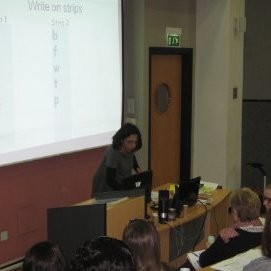Textbooks are key components in second language programs. They are usually the primary source for much of the language input students receive and the practice that takes place in the language classroom (Richards, 1993). Nowadays, language coursebooks come in the form of organized, portable, and pre-packaged set of learning materials such as student books, workbooks and/or companions which often determine the goals and content of teaching and provide a sense of structure and coherence to the language lessons.
As language teachers however, we often feel that the prescribed textbooks and their ancillaries are not enough to achieve our classroom learning objectives and we often embark on a search for additional materials that can reinforce our teaching. Over the years, I have spent countless hours looking for exercises in books or on the internet that either give my learners extra language support and practice or address perceived gaps in adopted instructional materials. Long gone are the days when the language coursebook was followed religiously and unquestionably- well, at least that was the case in some cultures. Now, teachers like to supplement their teaching with materials because coursebooks fall short of their expectations. I am not implying that all coursebooks and other commercially produced materials are of sub-par standard; on the contrary, nowadays, there is a plethora of published materials of superior quality; many of them are beautifully designed, visually stimulating and pleasing with content, which is well-presented and structured but, they all fail in one respect: they are unable to capture the idiosyncrasies of our specific context. Textbooks, no matter how good they are, cannot accomplish all our teaching goals or address all our students’ needs.
Mismatches between expectations and coursebook content
As we all know every classroom is unique, every classroom is mixed ability (Prodromou, 1995) every classroom is never the same as learners are never the same. Identical instructional materials used in two different classes of the same level will not necessarily have the same appeal or impact because learners themselves are different. Hence, all coursebooks are deficient in one way or another.
Teachers are well-aware of the fact that it is very hard to find a single textbook that ticks off all the boxes for successful language learning such as meeting students’ different needs, aptitudes, interests, level, or age. Added to that, as mentioned above, the coursebook is often seen as lacking in some respects; perhaps a teacher might feel that there is not enough speaking practice, the grammar exercises are too complicated or too simple, the listening activities are too long or too boring, or the texts are just not authentic enough. The list of mismatches between teachers’ language expectations and coursebook content is not exhaustive; other factors also come into play when a teacher chooses to enhance students’ learning with ‘an out-of-book experience’. By diversifying the content delivery with additional resources which take the form of hand-crafted worksheets, (online) games and exercises, videos, quizzes, and experiential activities of all sorts, the teacher may encourage class participation, engage students in learning and connect their learning to their real world. Having the freedom to select, add, adjust, or design resources empowers language teachers as it enables them to use their professional judgement to inform their practice.
Conversely, practitioners are deskilled and their decision-making atrophy when they are simply expected (or instructed) to follow pages and activities as laid out in a teacher’s manual (Maley, 2011). Teachers then turn into mere ‘technicians’ whose only job is to teach materials prepared by others (Richards, 1998, p.226).
So, supplementing materials is always a good thing, right?
Unfortunately, there are no binary responses - ‘yes’ / ‘no’ or ‘true/ false options - for this question. What is certain however is that selecting the appropriate material whose purpose is to reinforce the understanding of concepts and increase teaching effectiveness should not be taken lightly.
Teachers need to think and plan carefully how they can fit the additional resources into their lesson and how these are best implemented to maximize their learning gain.
A framework, such as the one I propose below will enable teachers to design, select or adapt supplementary materials more effectively for the needs of their language classroom.
What does this framework do?
The framework provides easy to follow steps for teachers who wish to boost their teaching with the inclusion of extra resources and activities. In Step 1 and 2 the teacher locates the lacks in the teaching syllabus and identifies the type of activities that address his/her classroom needs. Then he/she enquires into the factors that may contribute to or prevent the successful implementation of these activities. These can vary from allocating the right amount of time for executing a task to making sure that there are enough devices for learners to complete online activities. Finally in step 5 the teacher is expected to reflect on the outcome of the activity and critically assess the impact it had on the learners to inform his/her practice.
All in all, supplementary materials, when used appropriately can become a powerful tool in the hands of a teacher as they do not only teach the language but also help in the transmission of human values, ethics, and citizenship to our learners.

